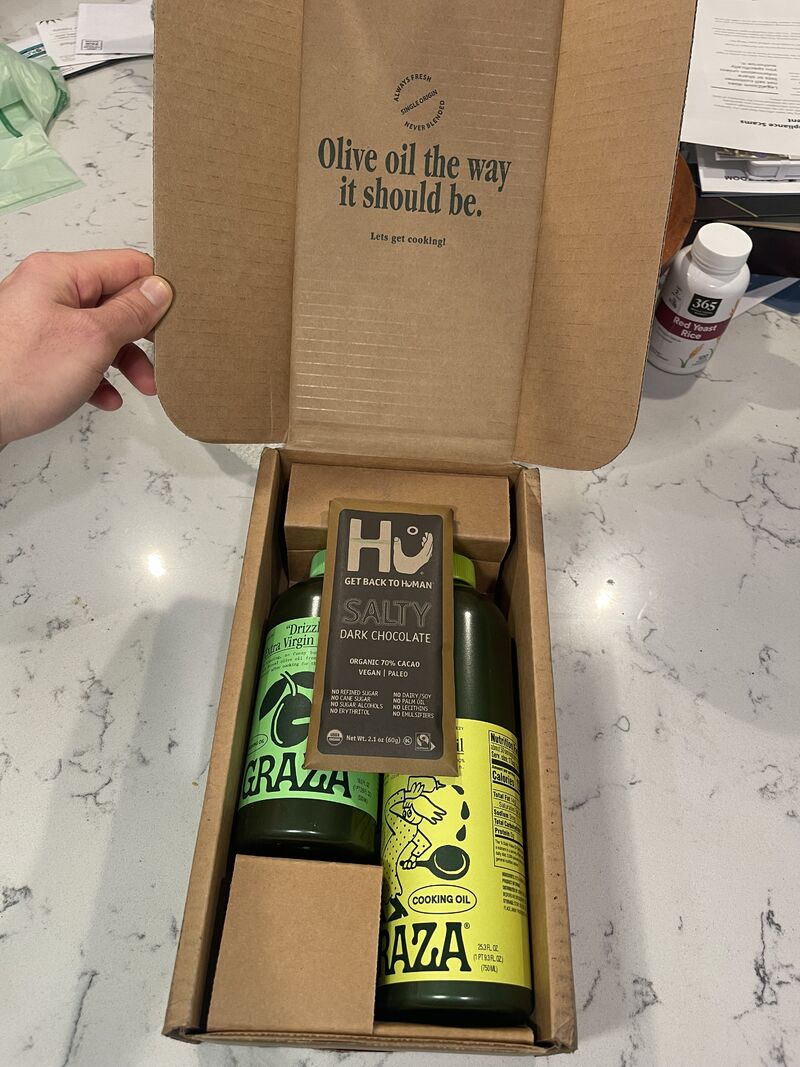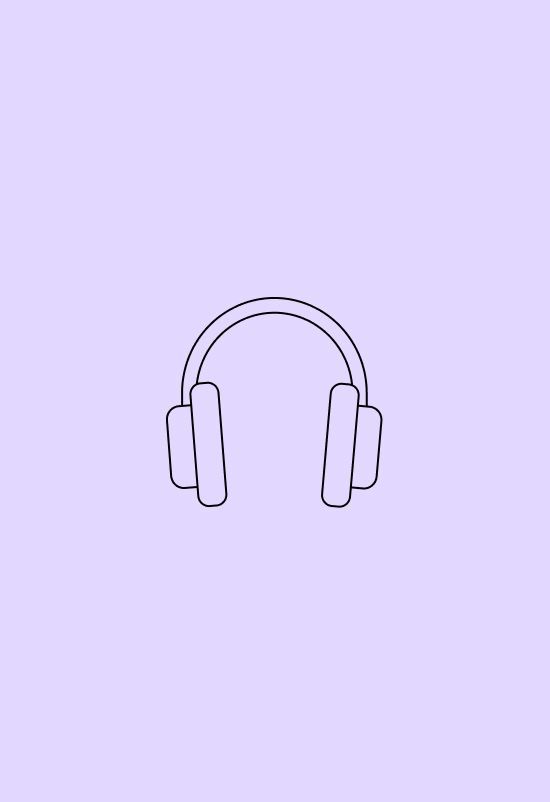Sara is the queen of PR for CPG brands. Her client list includes a lot of brands you're probably familiar with Magic Spoon, Graza, and Poppi.
Demystifying PR for CPG Brands
Bill Gates has a famous saying that said, if I was down to my last dollar, I'd spend it on PR and I actually disagree, which is maybe crazy coming from a publicist. And I would've said that would've probably been true 20 years ago, which is when I started PR to totally like age myself.
But the industry has shifted so, so much. And so it's not as simple as “I have a brand, should I do PR?” A lot of what I do right now in this stage in my career, cause I've sold my agency and I'm not in the day-to-day anymore, is I advise brands like, when do you do PR? How do you think of PR?
How do you think of what you should spend on PR based on the current revenue you have? It's definitely not this like one size fits all approach and largely why that today is because the whole kind of top of funnel landscape has changed. And back in the day you had an amazing product. You had a great founder. There was a million publications to pitch the product. Editors were really incentivized by just writing about cool brands and we've seen so much change in the space largely with the rise of affiliate marketing.
Should I have PR?
There's the tactical questions like, what are you doing in revenue? Because there's this rule of thumb that you really shouldn't spend more than 15 to 30% of your revenue should be on marketing, but not more than that. And so if a brand's already spending a lot in performance and social and they have very little left to spend on PR, sometimes it's not the right fit because PR today isn't just hiring a publicist to pitch. It's having money that you're already putting towards affiliate. It's having really good social channels because we all know that editors and influencers, and now consumers are often going to TikTok and Instagram before they're going to a brand's website.
So if you're gonna spend money on pr, one of the first things I say is, what other channels are you investing in? Because if you don't have a robust social media strategy, if you don't have a cool website if you're not doing other things, often times PR can die in a silo. And it's one of those things where it's historically been always hard to measure. So if a client's paying 10,000 a month in a retainer, oftentimes they'll say what can we get out of it? And PR is not typically a revenue driver, it's a brand awareness driver, we often say there's this rule of three in PR, which is if a consumer like reads about her brand in the New York Times and then see gets hit with an ad on social and then maybe there's a demo in Whole Foods, oftentimes that first PR exposure is what is, what kind of is that halo effect for oh, now I'm seeing them everywhere.
I think it's a fallacy to think you have a cool brand, you should get PR. Oftentimes it's not a great resource to invest in. So I may be getting hate mail from publicists out there, but I think that it's just not a simple question these days like it used to be.
Packaging & PR
If there's three brands, let's say someone's working on a protein bar story for a quick, easy example. If an editor is being pitched three brands and two of them have not great packaging and one has better packaging just like us, they gravitate towards someone that has better packaging. It pops out more, whether it's, an old school page and prep pr, whether it's online. And so you really have to think of that whole consumer experience. It's not just having a cool story it's everything.
Oftentimes it starts with the basics, which is does your product look like something I wanna buy? Yeah. Which is why when you think of like the Magic Spoons of the world and the Grazas, yes they're innovating for sure in, in their category, but they're also fun and people want have it.

Graza is really disrupting the olive oil category, not necessarily with, a crazy founder story. Although there's two great founders in Alan and Andrew and not in ingredients, although they harvest from, from amazing olives. But it's really, I think in kind of the consumer experience which they're delivering - they are fun. They're not taking themselves too seriously. They've obviously changed like the format they've made something that sometimes has been a little intimidating, like how do you cook with olive oil in the kitchen? They've just made it really accessible. And I think if you look at like their consumer experience from when you first discover the brand when you purchase, to the surprise and delight to how they've handled price increases to how they've handled being out of inventory. They've just done a really good job at keeping it real, for lack of a better word and keeping a real connection between the brand and the consumer.
It's really cool how they added the chocolate bar into the box because it makes you think about olive oil in a different way and gets to where you try the product in a way you might not have ever done before.I think consumers are just smart these days and they just want a cool brand experience, whether it's a surprise and delight, whether it's their favorite celebrity, but you just have to do it obviously in smart and resourceful ways.
Influencer & Celebrity
Content creators, influencers, however you wanna call them these days they're absolutely an asset. A brand should leverage. Depends on how much and when and who to partner with. And there's always gonna be arguments going back and forth between marketers and founders and brands.Did you go the micro approach? Do you find a few hundred micro influencers anywhere? Honestly, from a thousand followers to maybe 50,000 followers. You seed them product, you don't pay them, you give them product and you just see organically what they create. And a lot of times now brands don't even really give any instructions. Often a strategy that I tell clients to employ is, before you spend a dollar, seed product and see who organically loves the brand. See who organically does content and see how it performs. Often times people have a thesis of we're gonna go after, the Gen Z mom who is living in, coastal demographic and this is what we think. This is who our shopper marketing research has told us. But oftentimes people are surprised. And so really I think if you're an early stage brand and you don't have a ton of budget, you can get scrappy, go on Instagram, look up hashtags, look up people and start to see just who you naturally gravitate to. DM them. Say, Hey, I'm a founder of a brand or a head of marketing. We'd love to send you product if you're so inclined to do something with it. Keep us posted and we love to see. There's also, all these platforms now, whether it's like mini social or things that really enable brands to do this, on a macro scale, but for not a lot of money.
The idea of a macro influencer. So let's talk about the most famous one, like a Kardashian, they can move products. Yes, but I think for early stage brands to actually get, like to lead to trial, to lead conversion, it's a lot less riskier and more impactful to go the micro route anviral?
You can't go. Yeah. Like virality is not necessarily in the control of anyone. When you think about moments that have gone viral, it is, it has been us usually incredibly authentic, non constructed. It's just been, it's what happened and. , that's why it goes viral cuz it feels authentic.
And so it's a challenging time I think, to figure out how to spend. But I think the best advice is start smaller and start authentically and without paying. And then go from there and see who actually is like a real brand advocate.
Mailers & Gifting
We see this in CPG house a lot, but people will be like, Hey, I'm throwing this event, or I know someone throwing an event. Does anyone wanna seed product?
Before sending product, the first thing that I always tell brands is let's look at the guest list. Who's the intended recipient of these product? What is the theme of the event? I'm a believer that like cans in hands. Because so many times when a consumer's at Whole Foods and they are looking at the kombucha set and there's 80 kombuchas, they don't know what to choose.
But if you're like, “Hey, I had it at that event” like that will lead to repeat purchase. But it also comes down to inventory. I'm advising a few brands right now, and it's really hard to raise capital and they have limited inventory, and every time they give a product out, they're looking for a tangible ROI. And so if you're a brand that has like very limited inventory, I think there's things you should ask:
- Is there a guarantee of social?
- Is there an opportunity to talk to the marketing manager after the event?
- Future collaboration opportunities (LTO)
My advice to brands is always if it's a cool guest list, if it's a cool crowd and you have product, do it. You wanna be part of those things because consumers remember. And it also just makes a brand feel a lot bigger. So you can be a brand doing 200,000 in revenue, but if you pop up at a Coachella Revolve event, you suddenly seem like you're a nationally available brand, even though you're not. And so I think there's it goes back to this halo effect. It goes back into this. Cool. I saw this brand somewhere.
Best Practices on PR Outreach
I think this like tendency I have a product, I need to hire a PR firm, and I need to spend 15,000 a month. And if I don't, there's no way to do it. And there's so many ways for a founder to do PR on their own. Granted, it's more strategic, it's a little more robust if you're with someone who does this day in and day out. But I think a great way to start is to be a consumer of the outlets where you wanna be in. So if you have a product and you want it to be in Buzzfeed or Teen Vogue or Business Insider, Start getting familiar with those stories and start getting to familiar with the bylines, which is the name of the editor who wrote the article, start following them on Twitter start.
And lots of times on Twitter editors will write, Hey, I'm looking for sources for a story on this. And you, and they'll put their email directly in the tweet so you can email them or you can DM them. But the best thing to do, and this is what I told my team when I was running the agency. Become obsessed with the content in which you wanna be in, because then you'll know who to pitch.
You'll know where to find them, and you'll know what your pitch should include. If you don't have the benefit of having a pre-existing relationship with an editor, it's trickier sometimes because oftentimes why brands come to PR firms is for these relationships. But that's not to say you can't get the relationship.
So I always tell people, if you're gonna go like rogue and do it on your own, have a super captivating subject line. Lots of times people open things more if the name's in it. So let's say you're pitching Amy, you'd say, Hey, Amy, new brand, new brand on your radar to check it out. You'd want something a little more captivating.
But it's great to have the personalization. And then your actual pitch should be super short and sweet. I've talked to so many editors, and especially if you haven't worked with them before, if it's more than four lines, they typically erase it. They don't know you. Editors receive hundreds and hundreds of emails a day, so if you're not a name, they know oftentimes it either goes into spam or they don't read it.
So hit them with the first line this is my product and this is why it's relevant for you to write about. And include a high res link to. Include a link to your social and include like the why now component. And then I always tell people follow up within three days. Typically. Don't follow up more than that because you may get blacklisted.
Another great way is there's something called Help a Reporter Out. And it's a free thing you can sign up for and you'll get leads coming to your inbox every day. And a lot of them are really strong, high integrity leads. So from like the Washington Post, the New York Times, and it will give you a generic email.
So it's say, I'm working on a story on the best gut bloat products. If you have anything. If you have anything. And then you can email. And if they're interested in your product, they'll email you back directly. But it's a great resource to have if you don't have, the budget.
So one brand that I'm helping right now is a brand called Minus Coffee, and they're a bean less cold brew. And they did this amazing tour in the fall where they were in San Francisco and they had a truck and they were handing out product.
You don't necessarily need to have this like national event or huge tour. Sometimes you just have to be like right place, right time and be surrounding yourself with some of the industry people. CPG House is a great example. There's so many great resources in there. And so oftentimes it's not this big push. It's doing something cool, small and niche and just getting on the radar of the right people. And that stuff goes viral in its own sense for these national publications and start to learn about it, and then you get these amazing incoming opportunities.
Affiliate Marketing
What we're seeing now is that the last few years have been really hard on the publishing industry. We've seen a lot of publishers close in the last few months. There's been a ton of layoffs from probably every publication, and it's because it's harder to make money. And so the way that the publishing industry has stayed alive is they have pivoted to this affiliate model.
And just like in very layman terms, what it means is that if you're reading a story and you click on a link and you buy a product from that story, the publisher gets a commission on it. And so it's a way to basically incentivize incentivize brands to get into a story. Because publishers are much more likely to include a brand if there's affiliate link because there's commission that's paid back.
I would say a year or two ago, I would tell brands like, you really should look into affiliate. Share Sale and Skio links are the two that most CPG brands are on. They're the most that are like widely accepted by dot Dash and Conde and all these big publishers. And it was like a nice to have.
And I would say, it may help get in the story if you have it. Now there's not even any hush church and state, there's no separation. Editors will straight up say, unless you have affiliate, whether it's like a share sale or there's an Amazon affiliate, we won't include you. And it's funny because really publishers are now moving the directions of just being affiliate links.
And while I think they still try to keep the quality of the content good it's just for sure you'll get priority if you have affiliate. . We actually, back in the day and a lot of agencies that I talk to now, they won't take on brands unless they have affiliate up and running and, it's about 650 bucks to get up on share sale.
And then typically you can either have your PR firm manage that or someone internally. And the simple way of saying it is that you can change the commission structure per publisher. So you can say when your publicist pitches. Men's Health, you can say, we offer an 18% commission.
Men's Health might say we need more. And then you can control that on the backend and that will help you get included in the story.
Founder’s Stories
And so if you're looking at a sea of products and you resonate with the brand and there's a why and not just a what I believe you're more likely, I know I'm more likely to buy the product. And so founder stories, a hundred percent matter. But it's what I tell people about if they should bring on a celebrity, like the product has to be good on its own without the celebrity and without the founder story, or people won't buy it again.
So it's a, it certainly helps, I think with the narrative. It helps with the pr. A lot of what you hear in PR agencies is what we do through thought leadership. And thought leadership basically means we get our founders, speaking on South by Southwest panel, maybe doing a TEDx talk. So if you see an amazing founder on stage and then you're at and you see the product, it's a connection. Yeah, no brainer. It matters. It matters. And very rarely these days, I, at least in my purview, am I seeing CPG brands that don't have a founder's story. When you look at these legacy brands Unilever or General Mills or Kelloggs , they're looking to acquire brands that have a strong founders story because they don't really have a founders story because they're these like older sagi brands. So I think when you're thinking of like an A potential exit, really developing that narrative in the beginning is super, super important. I think it's easier now than ever to develop your own persona because there's so many platforms. And so for more of, like if you're looking to raise capital, you as a founder need to be on LinkedIn. Commenting on things you need to be an expert in your category. If you're not comfortable being like the face of the brand, LinkedIn is a great place because it's not video where a lot of founders now are a hundred percent like on TikTok and even if they're not comfortable, they know that this is where their consumer is.
Or LinkedIn is a little more under the radar in the sense that it's not necessarily you talking, but I tell founders all the time that if you're looking for more of that like b2. Presence right now, whether it's like getting into retail or it's raising capital, having an opinion and having a point of view on something is really important.
PR stunts and Making News
And oftentimes when you're thinking about doing PR for a brand, one of the first things you ask is do you have innovation? Do you have new products launching? Because we all know newness helps to get PR. We need to create news. And that can be bringing on a celebrity. That can be a limited time only product that maybe you just sell online, It could be taking over a holiday like International Women's Day and doing something. So if it's doing a stunt and you have all this cash and it rains that day and you're out, or if it's doing an event and there is. I remember last year when Roe v Wade came out, no editors wanted to go to events. So if you can do it scrappy and you can have as many variables under your control, I think it's great. But you just have to weigh the cost analysis thing there. And the worst thing brands can do is have it be clearly not authentic, like when it's too overly constructed. I think consumers can see through that. I think Adweek is a great resource to read for these things. You can really understand like what are the brands that are getting Buzz doing and on what level and you can see what's working and what's not. So I think it's a great resource just to wrap your head around the space, if you're a founder and you're trying to understand what are some avenues you could explore.
What’s Next in PR for CPG?
I think if we had this conversation a hundred years from now, I hope the answer would be relationships are still what matters most. This is a completely, this industry is completely based on knowing who to pitch, knowing what to pitch, and knowing when to pitch. And so much of that is based on the recipient of that. Lots of times what I tell people to do is find an email, send her or him a note and say I loved your story. Your writing was great. This is something I learned from it.
By the way, here's a one-liner about me. If you're ever working on something where I can be a source, let me know. You're not actively pitching your brand, but you're just saying, I'm here. And I think that is something that no matter. How different the world changes. Just like having EQ when it comes to relationships I think is super important.
And I think honestly everything else has changed. I remember when I started out my boss in New York was like, don't you ever follow a client on social media that is really inappropriate and now. If you had a firm and your employees weren't following a brand, you're outta touch.
I think just good writing and being succinct and being concise and knowing your audience, that's never gonna change. Being scrappy is never gonna change. Everything else has shifted and I think now is a really unique time to be in PR to be a brand founder because you just it's changing on the daily and you just have to keep up with it.










